Route: 435, Shrewsbury to Ludlow
Operator: Minsterley Motors
Timetable: Hourly (Mon-Fri); every 2 hours (Sat); no Sunday service
Time: ~1h 15m
Cost: £4.70 Single
Date of Trip: 28/6/19
Saloping Out: Ian & Eleanor
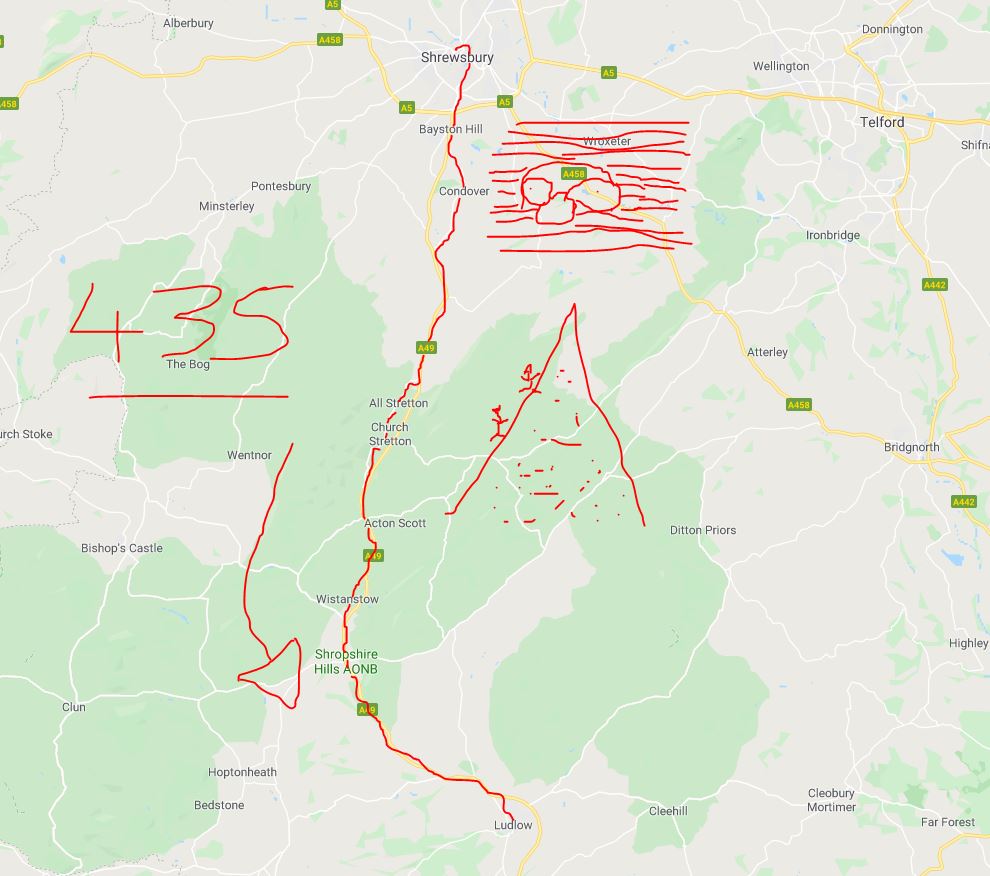
We have embarked on a rare Midlands adventure on the loveliest day in history. The thermometer is shifting gears through the mid-twenties, there’s a delicate breeze soothing its way along the River Severn, and we’ve got a bus driver who is the spit of an early ’90s Jimmy Greaves. With his shiny pate, bristly broom of a moustache and navy tank top, I’m a little upset that he doesn’t ask us to help him draw the 3rd Round of the Rumbelows Cup. Instead, he punches our tickets into a rickety contraption which screams in agony for the couple of seconds it takes to print out a dot matrix proof of payment.
There’s always a small burst of joy to be taken in the unfamiliar destination boards other buses are heading to in towns outside your usual area. The 552 to Plox Green, the 24 to Harlescott and the 1 to Monkmoor all come and go, travelling to termini that even as a dedicated map nerd I’ve never heard of. The chances are that I’ll never go to any them, either, but they all sound glamourous beyond what can possibly be the reality.
Shrewsbury is one of the UK’s most underrated towns. It is festooned with ancient black-and-white timber framed buildings, a good portion of which lean at sozzled angles, with upper levels lurching out to create distinctive overhangs. These were put in place because tax in the 17th century was often calculated according to the square yardage of a structure’s ground floor, and this ‘jettying’ was a wheeze to keep a few quid out of the Treasury’s pockets. Plus, the owners must’ve known that tourists would think it’d look cute a few hundred years hence.
The 435 has largely filled-up by time we set off at 12:30pm, turning what was already a warm interior into a mobile conservatory. I take a big glug of water, Eleanor tips an aniseed ball which has been gathering fluff in her pocket for two months into her mouth, and an old lady a couple of seats away unzips her coat very slightly. I know that pensioners feel the cold more than young whippersnappers, but with an autumn/winter collection of pastel jackets and woolly jumpers on parade, I didn’t realise that they’re impervious to heat, too. Gran’s not hot.
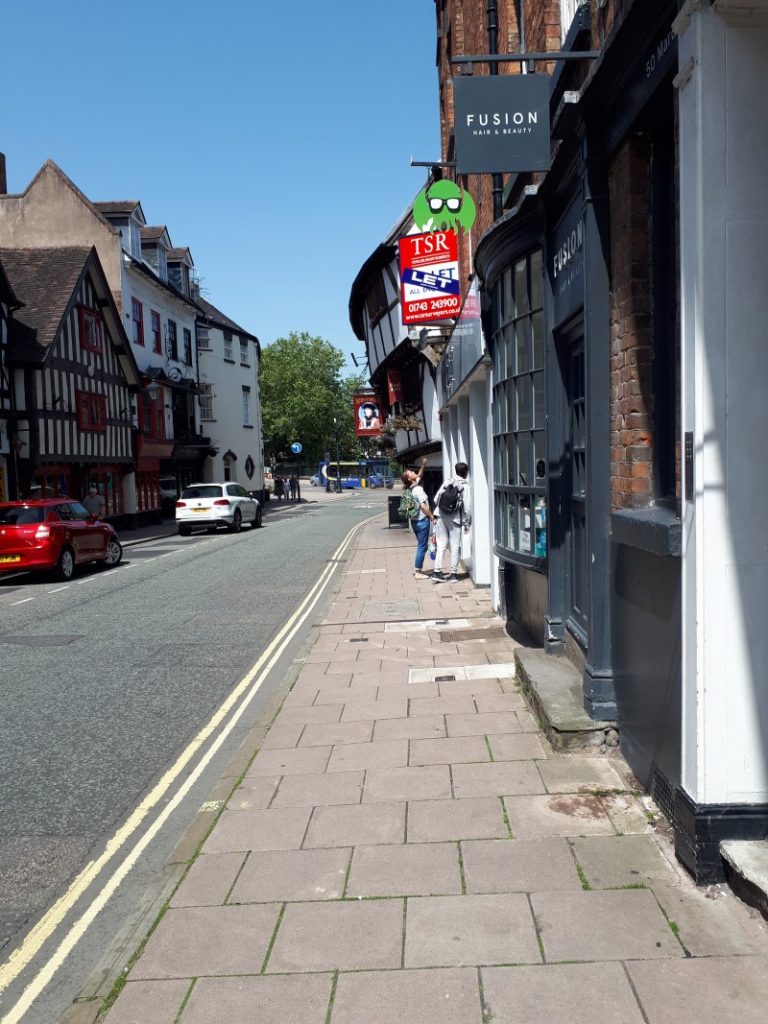
The sole passenger who is younger than us sits directly across the aisle to our right. He’s having a torrid battle with hay fever, which consumes him so much that he sneezes constantly for the first ten minutes. He apologises to the OAPs sitting in front of him after one of his expulsions coats their grey perms in a fine mist of snot and pollen.
As olde worlde as the centre of Shrewsbury is, its fringes are as much of a product of the modern big box orgy as anywhere else. Where else are you going to put a massive Pets At Home, if not on a retail park by a series of roundabouts?
Heading south, the A49 reverts to single file traffic as we reach Bayston Hill, the summit of which reveals a rural scene ahead as loud as any of Elton John’s suits. An array of greens pop from fields and bushes and trees, with golden crops soaking up the uninterrupted rays in a growing frenzy. There’s also a striking, sugarloaf-shaped mountain way off into the distance. There are other hills around it, but this one is so prominent that it might as well be Everest compared to the flat plain below.
‘Where do you think it is, Gingerface?’ Eleanor asks.
‘I really don’t know,’ I reply. ‘I’ve not got my bearings at all. Wales?’
With the driver setting a course almost directly for it, I suspect my guess is way off the mark before it even leaves my lips.
Heading down a side road takes us into Condover, which has a futile Neighbourhood Watch sign next to the village’s main bus stop. Not only are we in one of the safest areas of the UK to begin with, but most of the homes here can barely see their neighbours’ property, never mind catching sight of a hooded figure clambering through a distant kitchen window. Most of the settlement is a conservation area, at its best on the stunning run down towards Cound Brook, where perfectly manicured privets shield grand piles from prying (and Neighbourhood Watching) eyes.
Condover is also where Richard Tarlton was born. The leading comic actor of the Elizabethan period, he would often verbally joust with hecklers in improvised rhyme, putting him as a far-flung ancestor of stand-up comedians. Such was his popularity, that pubs were named after him as late as a century after his death in 1588, and theatregoers of the period would no doubt have associated the skull of Hamlet’s Yorick – a courtly jester – with that of Tarlton.
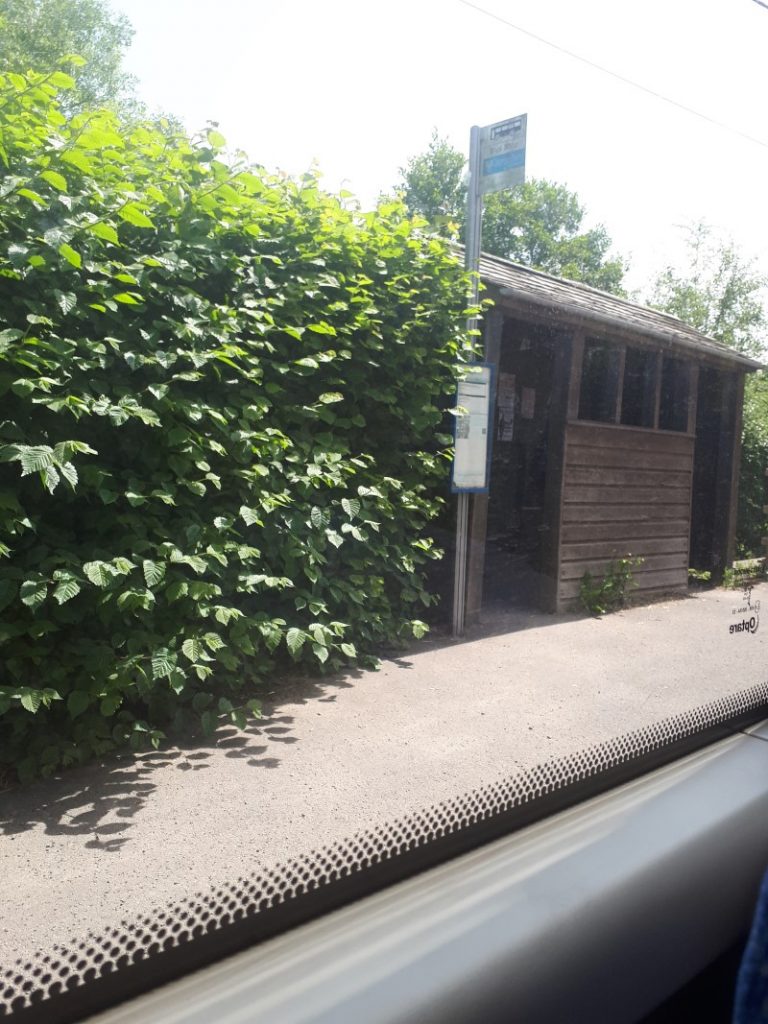
Enormous hedgerows, backed up by muscly ivy-covered trees, hem the bus in as we trundle through Ryton and onto Dorrington, where a pair of isolated graves sit incongruously by the corner of Station Road. That pointy hill is getting ever-closer, too, and we’re right beside it by time we leave the main road and head into All Stretton. It turns out that this verdant behemoth is Caer Caradoc, reputedly the final stronghold of Caratacus, King of the Catuvellauni tribe, who gave the Romans the run-around in the 1st century.
So delighted were the occupying forces when he was finally captured, that they carted him off to Rome to be executed. As Caratacus was such a highly prized prisoner, he was allowed the unusual honour of addressing the senate, where in an astounding display of chutzpah, he managed to talk the politicians into granting him a pardon:
“I had horses, men, arms, and wealth: what wonder if I was unwilling to lose them? If you wish to command everyone, does it really follow that everyone should accept your slavery? If I were now being handed over as one who had surrendered immediately, neither my fortune nor your glory would have achieved brilliance. It is also true that in my case any reprisal will be followed by oblivion. On the other hand, if you preserve me safe and sound, I shall be an eternal example of your clemency.”
We’ve entered the Shropshire Hills Area of Outstanding Natural Beauty, an epithet that is thoroughly deserved. With Caer Caradoc and its smaller pals to the east, as well as the plateau of the Long Mynd buttressing up against the road to the west, it makes for a sublime valley.
‘Oh, that looks really lovely,’ Eleanor swoons as we pass Stretton Hall. ‘I wonder if you can just pop in for a brew.’
‘Yeah, I bet they do afternoon teas,’ I nod back.
‘Oh,’ she sighs as we pass its sign, ‘it’s a care home. Never mind.’
‘I bet they still do afternoon teas for the residents, though.’
‘You’ll have to stick me in there when I’m past it, then.’
‘Deal.’
A couple of minutes later and we’re in Church Stretton, by far the largest settlement in these wilds, and the departure point for the guy with chronic hay fever. He dings the bell and walks to the front of the bus, saying hello to an acquaintance a few seats ahead as he does so. It’s then that he lets out a triple sneeze of such magnitude that, with his left hand holding a bag and his right catching his germs, his already low-slung shorts have nothing to stop them from sliding down beyond his knees. He styles it out tremendously, aided by most passengers staring out of the windows, and unhurriedly tucks his boxers away just as the 435 reaches its stop.
Our driver knows most of the passengers by name, greeting them with a cheery ‘Hello, Bob’ or ‘Afternoon, Jack’, although he’s forgotten to bring any treats for the black Labrador which hobbles on with his owner.
The road narrows and the sun is eclipsed by dense tree cover on the precipitous slopes to the bus’s off-side, forcing a cooling shadow to envelop Little Stretton. I’m not usually one to get doe-eyed over religious buildings, but the swallows larking about on the thatched roof of the otherwise wooden All Saints is too perfect a sight not to gawp at. I still find it incredible that place like Little Stretton exist. Ostensibly unchanged for hundreds of years with its idyllic pub, dovecotes and fire-baiting straw roofs, I owe whoever invented this route a pint, even if I can’t ever imagine living in a village. Not even one as pretty as this.
Ragleth Hill marks our return to the A49. Two people with hardier calves than most are somehow scrambling up a wild section of this hefty conical mound without the aid of ropes and crampons. It’s ludicrously steep, and they’ve every right to plant a flag of their choosing should they manage to conquer the peak. Back at road level, a paddock of dairy cows are getting grumpy with each other in the heat, with sidewinder headbutts being dished out by one particularly feisty character, who also deliberately flails her tail into another one’s face.
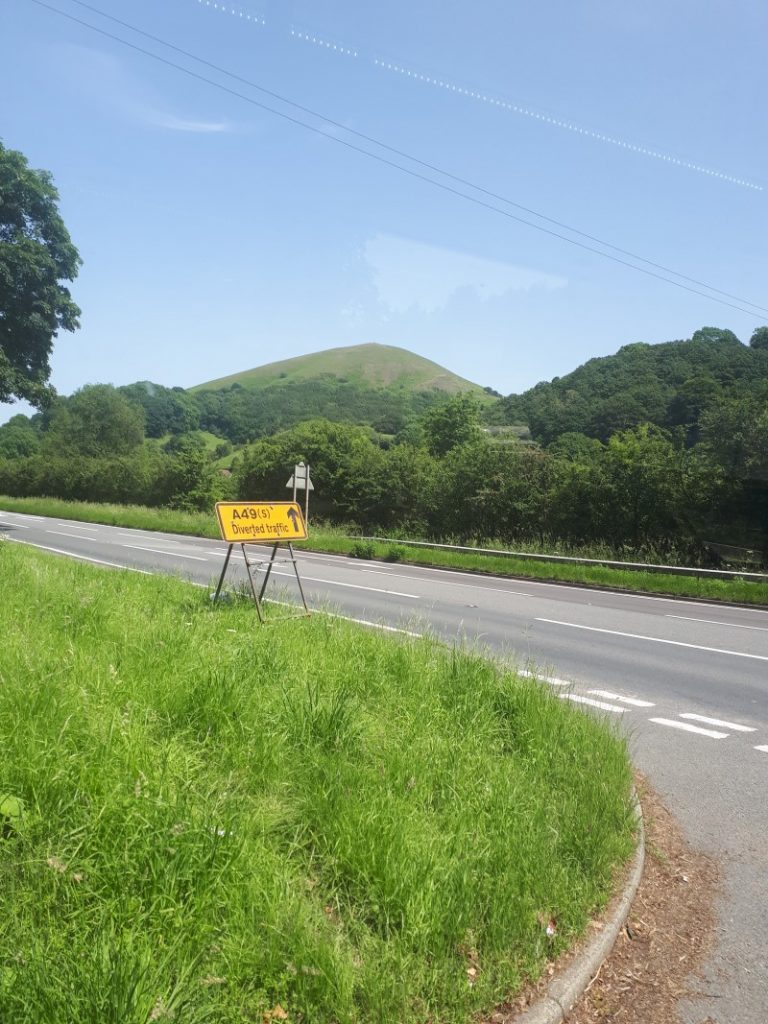
Wenlock Edge makes for a leafy green curtain away to our port side, before we again make our excuses to the main road and meander through a succession of serene villages. There’s clearly frothy-mouthed competition in Bushmoor for the rights to the quaintest house name, as not only is there a Rose Cottage, but there is also a New Rose Cottage a few doors away. I expect this came about via a long-standing family feud, with one sibling being disinherited from the original Rose Cottage, and deciding in a “well, I’ll show them” moment to cobble together an even cuter home just up the lane.
We glide down to Wistanstow, where we are met by yet another Rose Cottage, and a drinking game is born. Houses in towns and cities must have a street and number, with any names bolted on as a cutesy addition. It’s different out in the sticks, though, where residents can go wild with their choice of moniker, but generally don’t. The Orchard and The Meadow are the most popular building names in the UK, with Rose Cottage hot on their heels with more than 11,000 instances dotted about. Due to their determined rate of closures, The Old Post Office seems destined to be gain momentum and ‘improve’ on its current 20th placing – depressingly, there are over 2,000 houses called this already.
Craven Arms is a small town named after a big pub. It was previously called Newton until a railway station was plonked down and a more distinctive designation was needed. More interestingly, it’s where the Land of Lost Content museum is based. Rather than exhibitions based around ancient Egypt, local history or badly labelled taxidermy, it concentrates on pre-digital pop culture. An eccentric paradise one step removed from a junk shop, where old bikes and smoking memorabilia are jemmied in next to ironing boards and budgie cages. What’s more, Wayne Hemmingway (whose dad is a Mohawk ex-wrestler called Billy Two Rivers, incidentally) uses it as his company’s design archive.
A couple of miles further on, we try in vain to catch more than a fleeting glimpse of Stokesay Castle between the foliage. Craven Arms is named after one of its former owners, the Earl of Craven, with the origins of the town owing its existence to this peculiar castle/manor house hybrid.
We’re running a few minutes late, so the driver goes full clip along the main Ludlow road, the dream catcher which dangles from the rear-view mirror thrumming against the window, until we are called to heel by the barriers of a level crossing in Onibury. There hasn’t been a working station here since 1958, but while its former platform buildings are now pressed into action as a guesthouse, the artefacts outside are more like a shrine to ‘the good old days’ rather than the fun hodgepodge at the Land of Lost Content.
Its trinkets hark back to the era beloved of people who insist that rationing wasn’t all that bad and that we got through World War II just fine. As we wait for the Newport train to blast through, our eyes are saddled with adverts for Nectar Tea, Lyons Tea and Brooke Bond Tea, although the latter has a notice around it saying that it’s a copy after the original was stolen. Maybe that Neighbourhood Watch posse in Condover are onto something after all.
Pushed even further behind schedule, we careen through Bromfield, where the turbulent air being sloshed around the bus’s interior whistles the exact same hyperactive tune as I do when I’m absent-mindedly annoying Eleanor. I just wish that I could whip hair up into a frenzy as effortlessly as this especially stiff breeze does.
Bullion coloured wheat denotes our entry into Ludlow, where are a handful of sheep are shaking their cloven hooves at the farmer for not shearing them earlier. Their wool is matted and heavy, with one animal apparently unfortunate enough to have been mid-hairdo when the batteries on the clippers ran out. Partly shaved on one flank with a thick dreadlock almost touching the ground on the other, it has almost certainly been a past member of Pop Will Eat Itself.
Want more of Ludlow? Of course you do! Head over to the 292 bus page, which takes us from Ludlow to Kidderminster.
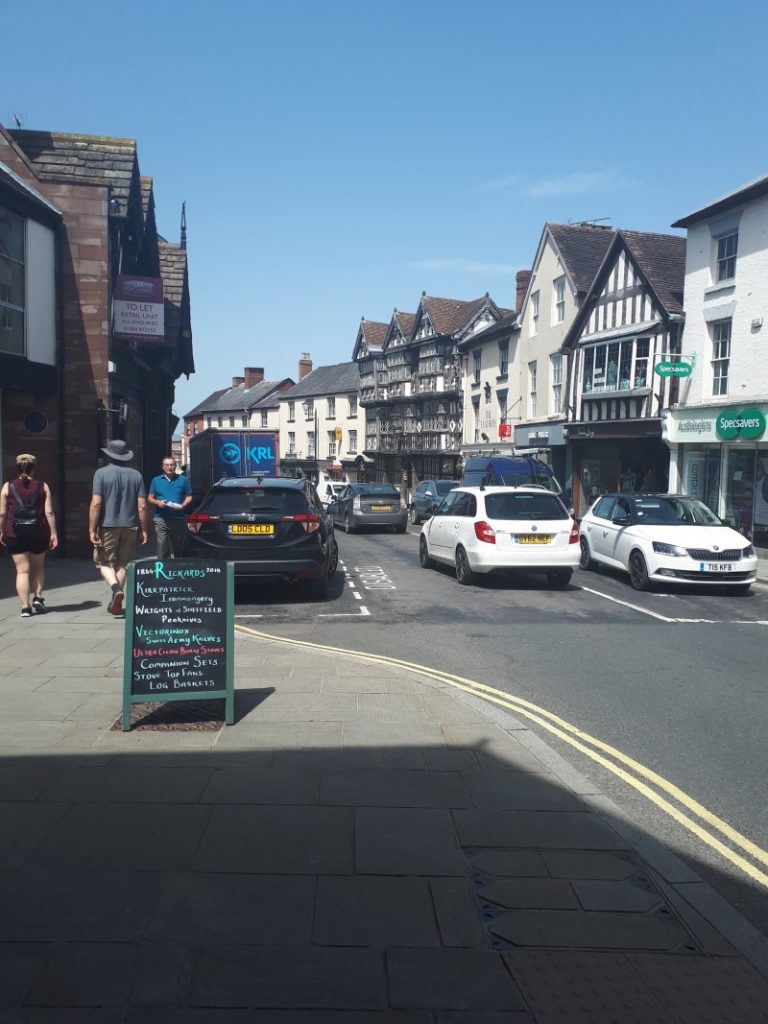
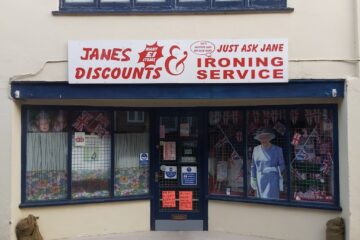
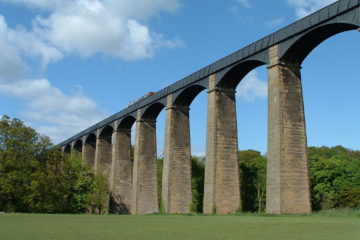

0 Comments